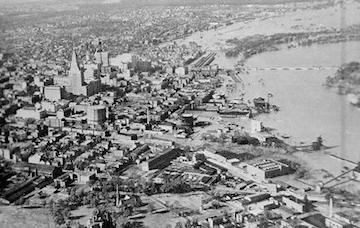380415- big hurricanes.jpg

Flooding from the 1938 New England hurricane. Credit: National Oceanic and Atmospheric Administration
In September of 1938, a monster hurricane roared across New York and New England. Sustained winds topped 120 miles per hour, and a massive storm surge flooded cities and towns. The storm killed about 600 people and, in today’s dollars, caused more than $40 billion in damages.
It was the most powerful hurricane to hit the region in more than a century, and nothing has topped its fury since then. Yet similar storms may have been much more common in centuries past. In fact, a recent study found evidence that 12 hurricanes that came ashore near Cape Cod before 1675 may have been more powerful than anything since then.
Scientists drilled into the sediments at the bottom of a pond on the cape. The pond is behind a sand barrier, so it’s protected against puny storms. But big storms wash over the barrier, depositing layers of coarse grains that are easy to pick out.
The sediments showed that powerful storms were common between the years 150 and 1150, and again from 1400 to 1675. A dozen of these storms probably were Category 3 or stronger when they hit land.
Other studies have shown that the North Atlantic was a good bit warmer than it is today. The heat provided extra fuel for the storms, helping them build to monstrous proportions.
Scientists are concerned that warming ocean waters today could cause the same pattern in the decades ahead — frequent storms that could be at least as powerful as the Great New England Hurricane of 1938.

